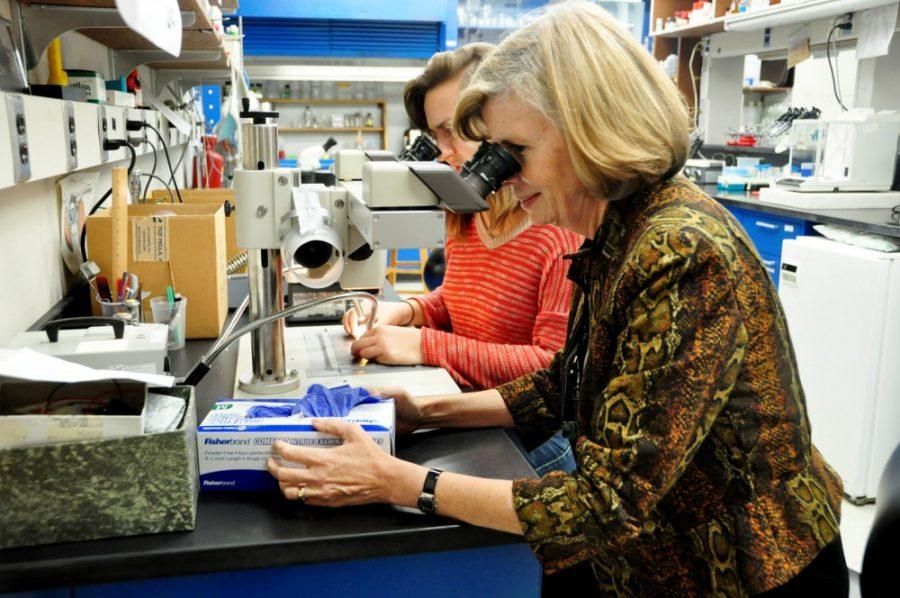The human body is similar to the bodies of other animals in ways most people would never expect.
Although it might sound strange, UA neuroscientists said animal research is one of the best ways to begin understanding the human body.
Leslie Tolbert, a regents’ professor of neuroscience who studies the interactions between cells in the brains of moths and flies, said the genes of other animals have been found to function the same way as those of humans.
“You can study genes and gene products in any species,” she said, “and find that at a fundamental level, they’re working the same way in humans.”
A large percentage of the genes that play a role in human diseases were first discovered in fruit flies, according to Tolbert. Though the creatures are small, their actual body systems are relatively much larger than the complex systems found in humans, making their bodies easier to observe and manipulate in the lab.
According to Tolbert, researchers can use a process called “gene knock-outs and knock-ins” to observe changes in gene expression in an animal when certain genes have been added or removed from its system.
In this way, Tolbert can manipulate different genes in moths and compare their results to the genetic patterns seen in humans. The next steps would involve looking at possible treatments for diseases and applying them to other animals, seeing how the animals are affected and producing medicine for humans based on the findings.
Tolbert said she recognizes that it is not always so simple when it comes to finding a cure for a disease, but that she believes animal research serves as the basis of modern medicine.
“You simply cannot do these types of experiments in humans,” she explained. “But we’ve got this amazing opportunity to do experiments in an insect that give us insights to development in mammals, including humans.”
Alan Nighorn, head of the neuroscience department, said he credits many medicinal advancements to animal research.
“It really has saved lives,” Nighorn said. “The kinds of things that we understand about the nervous system have helped us treat people.”
Although certain animals are often treated as models for humans, they are also studied for reasons that have nothing to do with making medicine.
Konrad Zinsmaier, a professor of neuroscience and molecular and cellular biology, as well as the chair of the Graduate Interdisciplinary Program in Neuroscience, said curing diseases is just one aspect of medical advancements.
“If we understand how the brain works, it will radically change society and how we interact with each other,” Zinsmaier said. “The brain makes us human, and understanding that means that we may understand ourselves.”
The latest findings in animal research were discussed in depth Nov. 9-13, when more than 30,000 people convened at the San Diego Convention Center for the Society for Neuroscience’s annual meeting.
One of the key topics was related to research done on animal species. Five speakers were elected to explain why certain species are being studied and what the implications might be.
As far as a specific future for this research, it remains somewhat of a mystery.
“The thing about research is you never know what’s around the next corner,” Tolbert said. “Every experiment you do may answer a couple questions, but it always generates more.”
Tolbert added that she believes without animal research, the world would not be as advanced as it is today.
“The point is that you would not want to be alive in a world today that hadn’t benefited from animal research,” Tolbert said. “The vaccinations, surgical procedures, so much of the medication that we take for granted was only developed because of the possibility to do animal research.”









